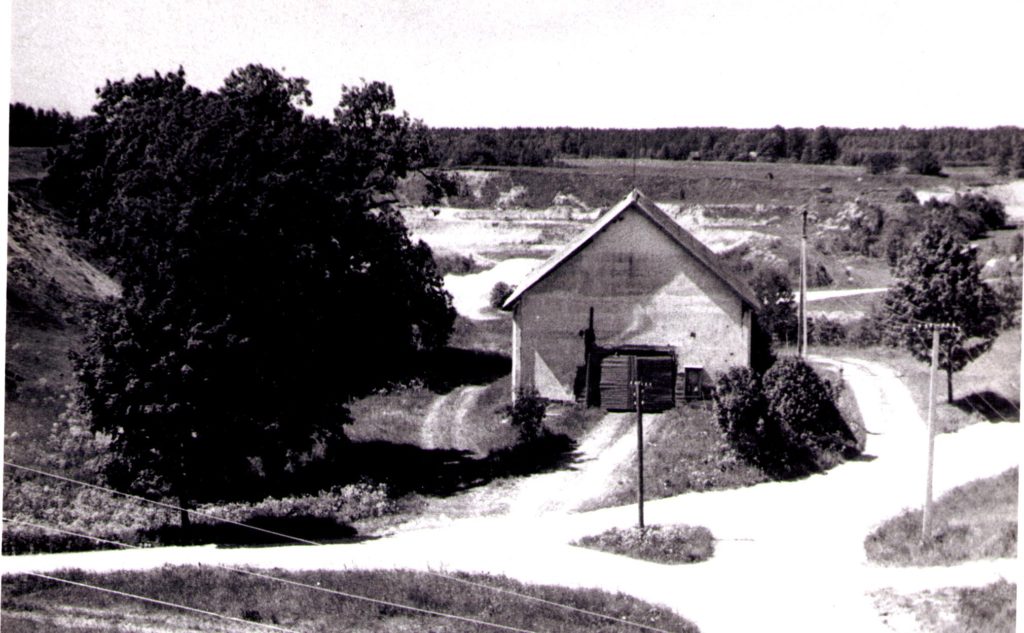History of the Old Church
From the dark of times
The first written mention of Tudulinna was in 1583. It took over a century until a more or less regular record would be written of the life and people here. We can find those records in the old church books of the Viru-Jakobi congregation, since the people of Tudulinna belonged to that rather distant church at that time. The pastor came to serve the members of congregation who lived behind the woods only a few times a year. The services were then held in farmhouses in Rannapungerja, Pikati and Tudulinna. There is information about a Tudulinna sexton (Pikati or Pitkete Karel) from 1736. While during the 1688 arable land audit, there were only 13 landowners in Tudulinna, but by mid-18th century there were twice as many, showing a growing need for local church service.
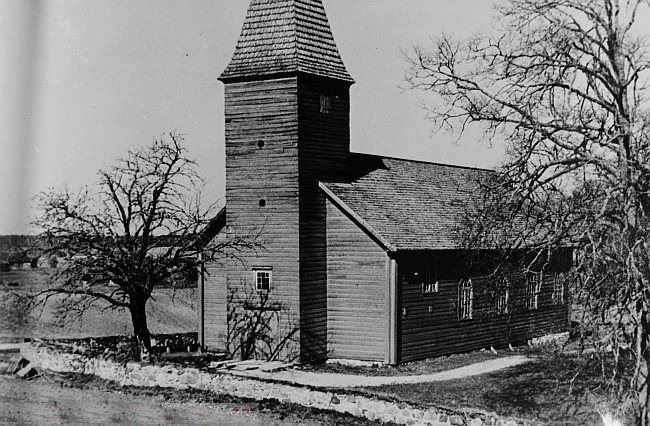
First local church
In 1766, under the guardianship of the estate owner of Rakvere Manor, von Tiesenhausen, the construction of a small church began. Linnamägi was chosen for the location, since a burial place already existed there. According to folklore, the building logs were taken from the same grounds, since unlike today, Linnamägi was covered with forest at that time.
Tudulinna’s first church, considered a chapel or auxiliary church, is said to have been 8 fathoms long and 5 fathoms wide (about 17 x 11 m). There were benches on both sides of the aisle, a small choir, an altar with a lattice and a pulpit. On February 25, 1767, provost Borge from Simuna consecrated the newly built chapel. The basis of the consecration speech is said to have been Gen. 28:16-17.
In 1768 the congregation decided to order the church a bell from Tallinn, from the widow of bellfounder Köwerin. The price was 16 rubles, 37 copecks and the bell weighed 40 pounds (about 16.5kg)
In 1796 a new roof was made and the roof structure changed so it would not be damaged by the wind. The northern side was lined with boards and a roofed hallway was built in front of the church door to stop snow from falling in.
It’s tight here
By mid-19th century the number of people in Tudulinna had grown remarkably. While the census of 1782 recorded about 330 people, the number of people in 1858 was already close to 700. The old church, soon to celebrate its 100th anniversary, started to seem too small. Therefore a more extensive reconstruction was undertaken at the initiative of the sexton Jaan Tomberg, to whom Tudulinna Manor was leased to at the time. Around 1860, the old church was partly demolished and rebuilt in the new form can be seen to this day. The work done at the church was officially labelled “expansion”, because otherwise permission to build a wooden church could not have been obtained. However, wood was the most handy building material in the middle of the primeval Alutaguse forest. Logs were obtained free of charge from the manor’s forests. The builder was Jaan Mölder (1817-1876) from Lahe farm. The church was consecrated by a Viru-Jakobi pastor on September 29th, 1862. The number of seats in the renovated church increased to 350. The sanctuary reached its present dimensions of 21.6 m x 10.9 m. Last to be completed was the western tower, a feature missing from the first church. The rooster on top of the tower is dated 1864, which probably marks the final completion of Tudulinna’s wooden church.
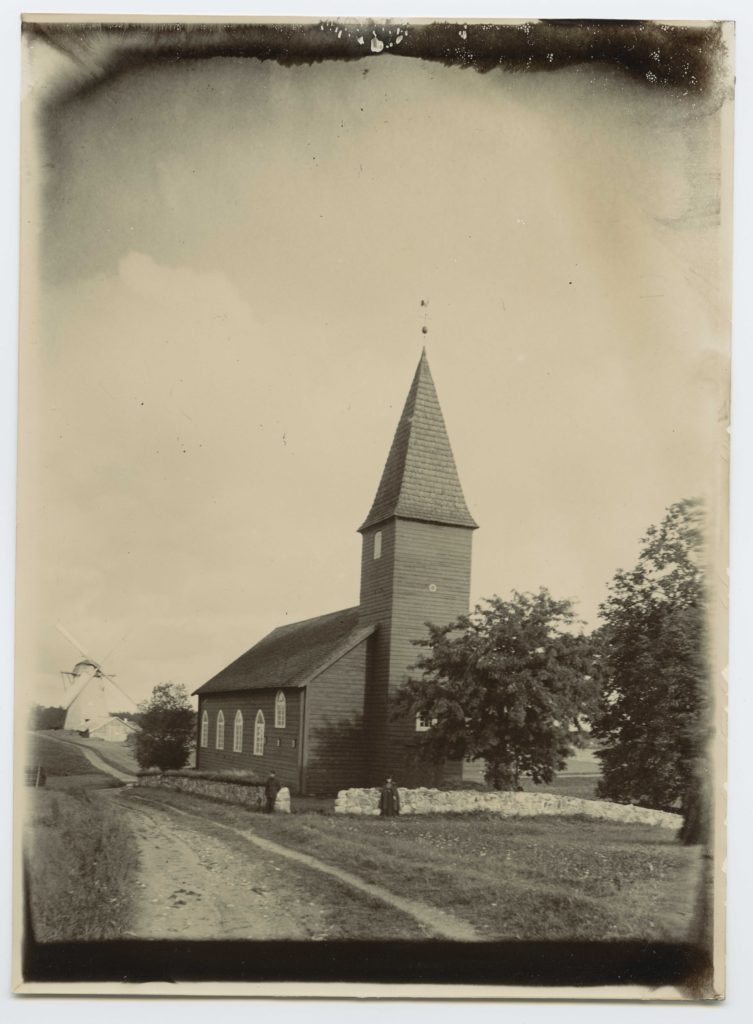
From Viru-Jakobi to Iisaku
Since the formation of Iisaku parish, the Tudulinna congregation was transferred from Viru-Jakobi to the Iisaku church in 1867 and became an auxiliary church of Iisaku. It was a logical step because Iisaku is considerably closer to Tudulinna. The services began to be held once a month by the pastor of Iisaku; the other Sunday services were conducted by a local sexton.
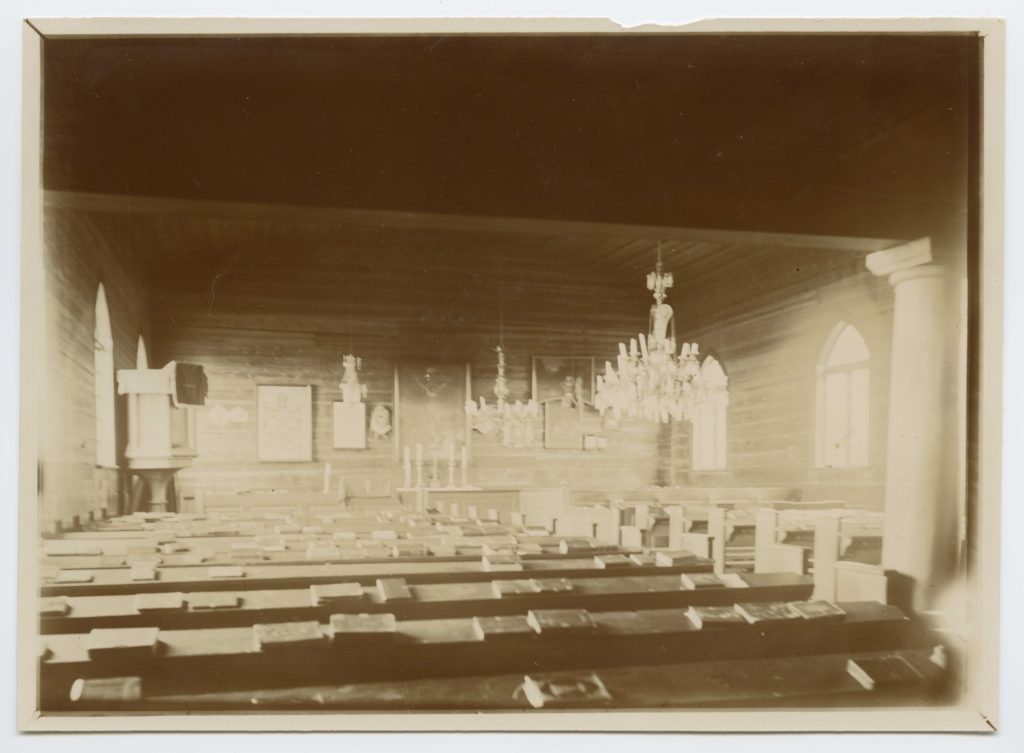
The story of the organ
It is not known when the Tudulinna church received its first organ. However, it is known that in 1912 a new organ was commissioned from M. Matto’s workshop in Tartu. It has been speculated that this may have been Gustav Normann’s work because the organ prospectus still to this day (in Tudulinna Peace Church) bears his name. The beautiful sound of the 18 register instrument was later highly appreciated by professor Hugo Lepnurm. The money for the organ was raised at church concerts and fundraisers.
The story of the tower bell
It is unknown what happened to the first small church bell ordered in 1768 from Tallinn. Later, the bell that ringed in the church tower was dated 1645. This is a rare example of an early baroque bell. The circumstances of where, how and when the bell reached the tower of the Old Church of Tudulinna has yet to be explained.
The first Estonian pastor
Until 1923, German pastors (most recently father and son Intelmanns) had served in the parishes of Iisaku and Tudulinna. After the death of young pastor Reinhold Carl Intelmann in 1921, the churches were left without one. In 1923, Voldemar Kuljus (1898-1979), a recent graduate in theology, was nominated as a candidate. His ordination at Iisaku took place on February 9th, 1924, by Jakob Kukk, the first ethnically Estonian Lutheran bishop in the country
Voldemar Kuljus brought new breath to church life. According to modern recollections, his sermons were vigorous and thought-provoking, but remained incomprehensible to many. The difference of opinion in Tudulinna was particularly sharp. There were those who enthusiastically supported the new pastor as well as those who considered his speeches to be unsuitable. There may have been other reasons as well, for example the fact that Voldemar Kuljus differed from the classical pastor’s stereotype that had developed over centuries. In addition to his work with the congregation, he was active in social and cultural life, directed plays and was a man of the people. All of this gave rise to a peculiar religious quarrel in the Tudulinna auxiliary congregation in the mid-1920s, which quickly attracted broader attention, reaching national and provincial newspapers.
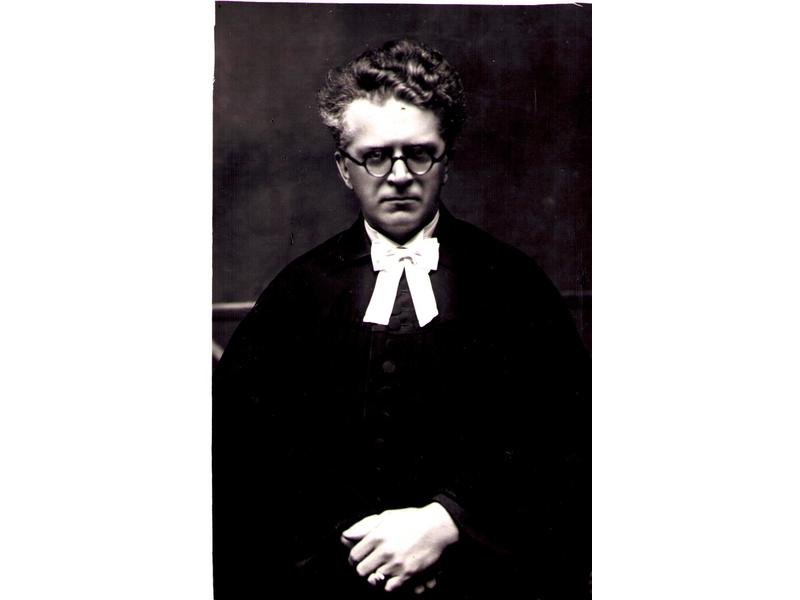
Church quarrel
The Tudulinna auxiliary congregation split in the mid-1920s into supporters and opponents of Kuljus. More conservative members of the opposition started to gather in the former prayer house of the Moravian Church, or Brotherhood. They formed a separate congregation with its own leadership and sexton, that was given a somewhat strange name considering the circumstances – the Congregation of Peace. The new congregation was served by pastors from Torma and other places.
Pastor Kuljus also came into conflict with the church itself over his religious views and was temporarily dismissed. The Tudulinna church was closed and no services were held there. A long and profound dispute with the Consistory began. An attempt was made to reach an agreement that some Sundays would be served by a pastor from one congregation and other Sundays by another. Even the Bishop H. B. Rahamägi, who visited Iisaku and Tudulinna in 1934, tried to reconcile the Tudulinna church quarrel. But his peace mission had no results either. The religious conflict continued and was unique in Estonia.
Occasionally permission was given to reopen the church; then services were held there for a while. Soon the door would be locked again.
Renovating the wooden church and the construction of a new church
In the 1930s, the divided congregation repeatedly wished to buy Tudulinna Church from the Iisaku auxiliary church with the aim to make major repairs and then reopen it, but no agreement was reached. Finally, in the summer of 1938, the Congregation of Peace decided to build a new church alongside the old one. It was completed by renowned architect Eugen Sacharias by the end of 1939.
The old wooden church was in dire need of repair. The Iisaku auxiliary congregation that remained there started the renovations in 1939. The building was covered with chipboard and plastered on the outside. As a result the wooden church looked like a beautiful white and stone building, but according to specialists, this was a poor solution for the old log walls under the plaster.
The main contractor was M. Sudov from Lohusuu. J. Ruuben and O. Mölder set up a new roof and the tower rooster was fixed by N. Vaas. The total cost of the renovations was 1060.62 in prewar Estonian kroons.
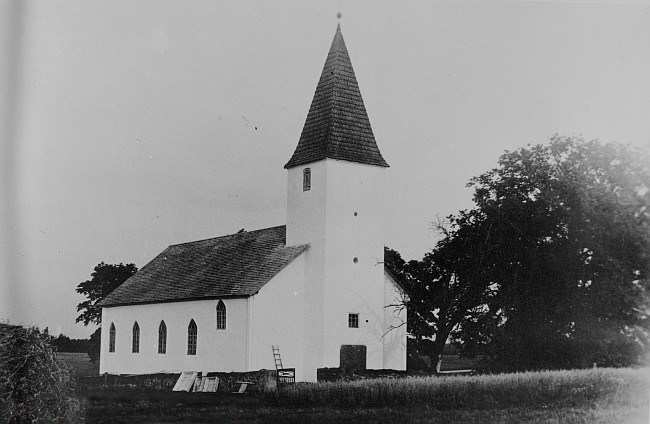
Two churches of Tudulinna, side by side on Linnamäe
After the renovation of the old church and the consecration of the new Church of Peace, a new era in Tudulinna’s religious life began. Two Lutheran sanctuaries sat side by side, each with their own pastors and different congregations. This has remained a unique situation in Estonian history. Outside of church life, people continued to socialise well with each other, regardless of which church they belonged to, in part because the two churches did not disturb each other. It was not uncommon for relatives, even members of the same family, to attend different churches.
Unfortunately, this period did not last long enough. World War II had already begun, and soon it reached Tudulinna.
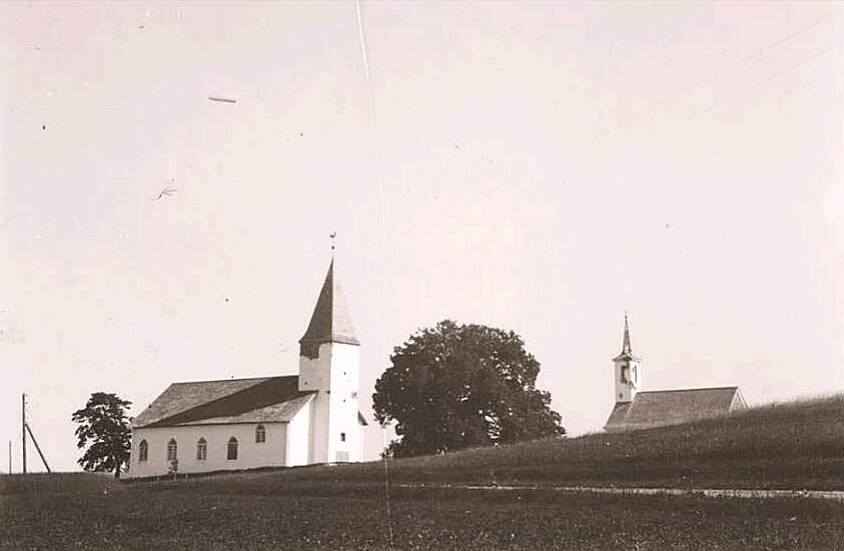
Closing the Old Church
World War II and the accompanying change of power in Estonia, as well as waves of repression, had major impacts on Tudulinna’s religious life. Within a few years, the congregations shrank from hundreds of members, to just a handful of active churchgoers. Old religious quarrels were left behind, since everyday problems required more attention. There was no practical need for two churches. The Soviet regime did not favour religious life at all.
Therefore it is not surprising that despite the petition letters from the old church’s congregation, the Lutheran church decided to unite the churches into the new one, the Church of Peace, and to close the old wooden church. The last service at the old church was in September 1947; this was done by a young theology student, Nathan Kukk, who was in Iisaku as a substitute for Kuljus. The old church furnishings (organ, benches, tower bell, etc.) were moved to the Church of Peace, because the church was not able to get all the necessary equipment there before the war began.
Voldemar Kuljus once again served in Tudulinna. The religious hostility was apparently gone, but the fire beneath the ashes quietly continued to burn…
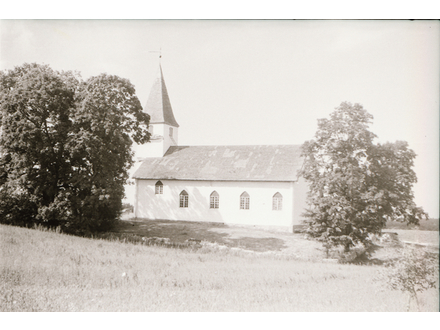
Bread instead of religion
As the old wooden church of Tudulinna was only recently renovated and had not been damaged in the war, the local sovkhoz (state-owned farm) decided to start using it as a grain barn in 1951, then as a grain mill starting in the 1960s. All original interior design was destroyed during the renovation. The organ balcony was demolished to make room for milling equipment, and a large doorway was cut into the eastern wall, from where trucks loaded with grain could turn from straight off the road. It was decided that a church-like appearance was not fitting for a socialist agricultural building, and the tower was unnecessary. Instead of dismantling it properly, the tower was pulled down by a belt tractor in the early 1960s. The mill worked in the old church until the end of the Soviet era.
In hindsight it must be admitted that thanks to the sovkhoz, the dignified building has survived to this day. The milling equipment needed to be protected from moisture and so a new tile roof was placed on the church. This prevented moisture damage that would have caused the building to decay.
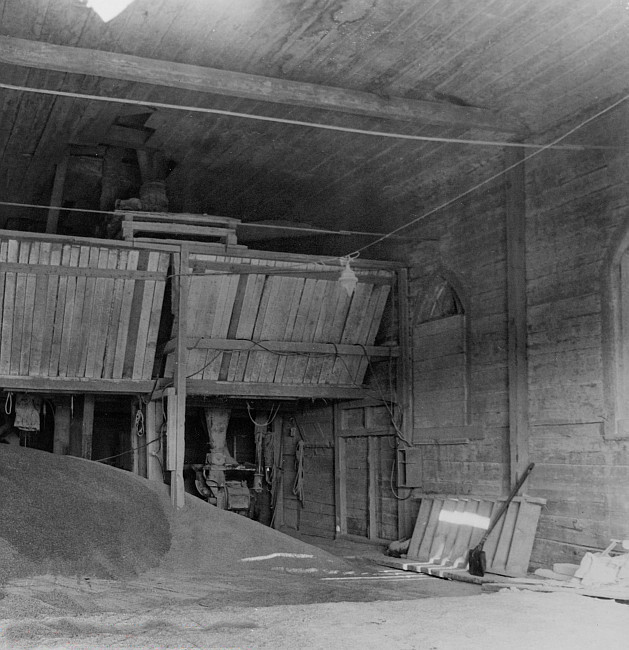
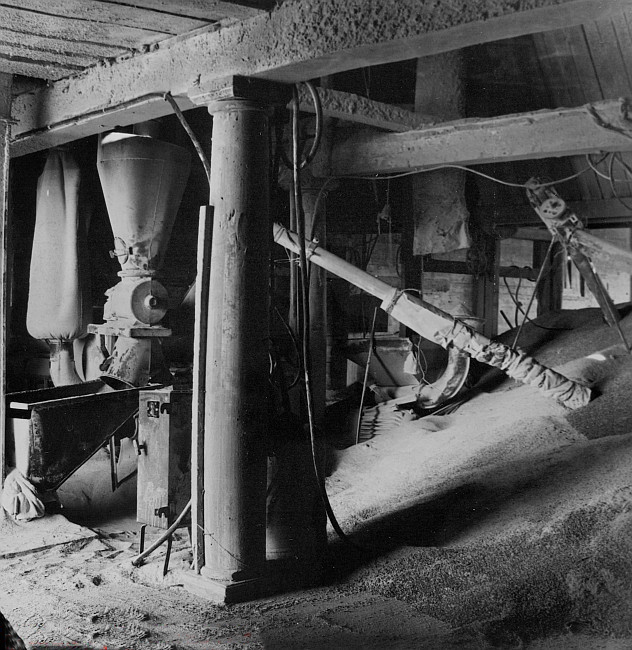
The church remains empty
In the early 1990s, the old church building remained empty. The milling equipment was stolen, and the building was no longer needed. The sad fate shared by many abandoned wooden buildings – dilapidation – seemed to await the church.
By the end of the Soviet era, there was already some interest in the church’s history. In 1987, historian J. Viires conducted an assessment of the building’s condition. As a result, a comprehensive summary of the old wooden church of Tudulinna was completed: Tudulinna vana puukirik. Ajalooline õiend ja ülesmõõtmisjoonised. KRPI, 1987. J. Viires.
On November 13, 1997, the old church, along with the Church of Peace and the Möldri Farm Windmill, was declared an architectural monument by a decree from the Ministry of Culture.
In 1998, under the guidance of historian T. Böckler, the church was inspected by AS Vana Tallinn, the current situation was evaluated and measurements were carried out.
In 2004, J. Kilumets (Rändmeister OÜ) carried out a technical study: describing the technical condition, roof bearing structure, ceiling structure, roof covering, walls, socle and the ground surrounding it, floor, openings. Initial conservation work was carried out: roofing, the replacement of damaged pillars, the tightening of existing steel pullers, peeling and levelling the soil west of the building and the installation of external wooden windowsills. The need for more conservation work was determined.
In spite of all the work, it was evident that if we don’t find a new function for the old church in 21st century Tudulinna, the building will be doomed.
